
there are a number of natural monuments throughout the nation that we should protect and value.
Currently, South Korea has a total of 456 natural monuments registered,
which are showcased in the Natural Heritage Center located in Daejeon city.
Korea’s Natural Heritage
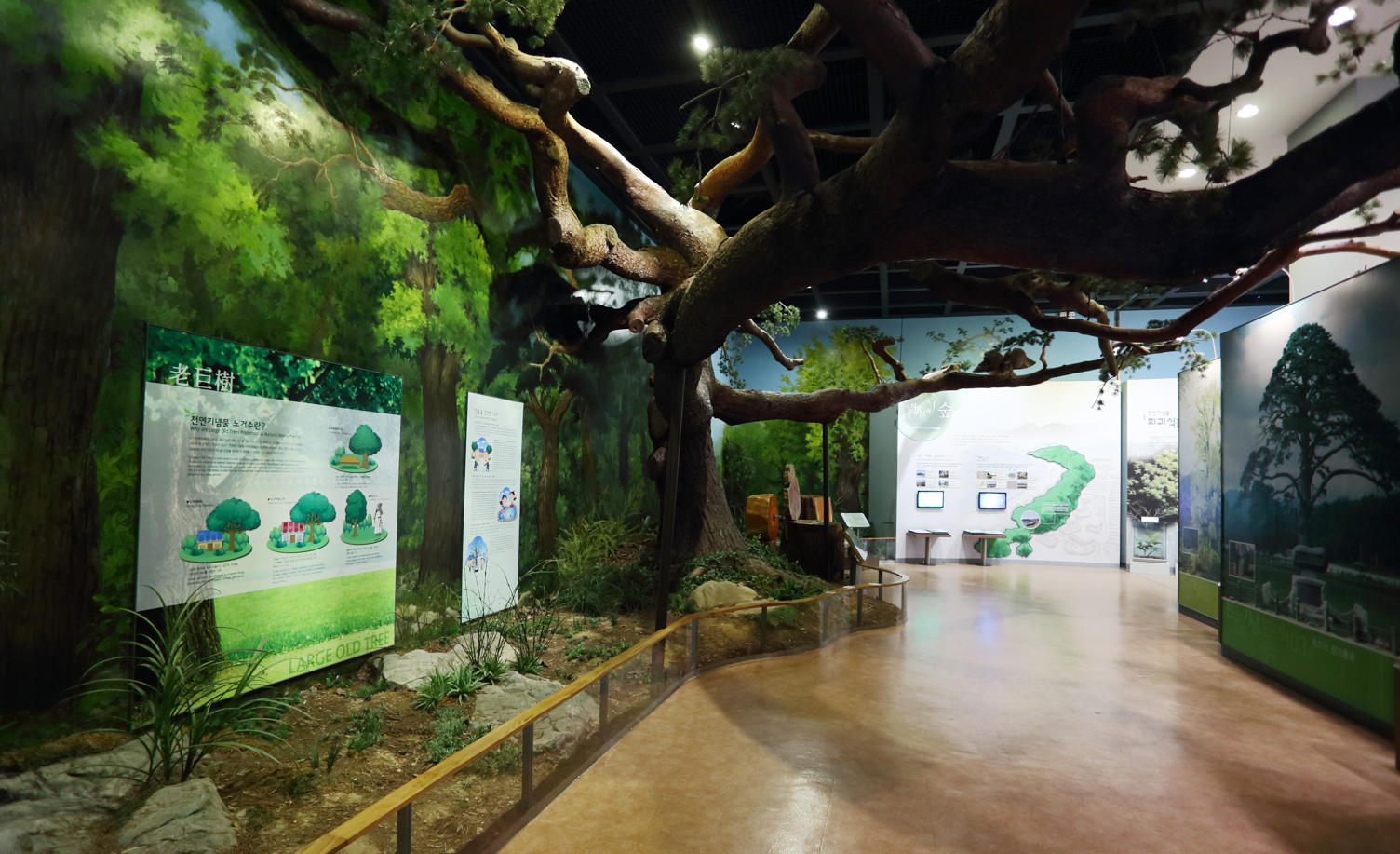
The practice of designating natural monuments began as an effort to protect and preserve
the nature following Korea’s Industrial Revolution, which inevitably accompanied natural destruction.
Usually, natural features unique to specific regions and those existing in particular locations of origin for a long time are designated as natural monuments.
Natural monuments in Korea consist of the fauna and flora, minerals, habitats, and natural reserves,
with a number of animals and plants to be preserved and with significant academic value.
The majority of a total of 456 natural monuments are plants including forests, trees, and flowers, and the second largest portion is taken up by animals.
While the natural monuments are located throughout the country, the largest number is found in Jeju Island, Korea’s largest island blessed with natural beauty.
With the natural monuments from all corners of the country, the Natural Heritage Center exhibits the value and importance of natural monuments through its collection of various plant specimens, fossils of dinosaur eggs and footprints, and taxidermied specimens of animals protected as natural monuments.
The most attractive thing to the visitors is the kiosk located at the entrance of exhibition rooms. The explorer appearing in the screen cheerfully waves his hand and asks the visitors to get ready for a search of natural monuments. Manufactured with the technology developed by ETRI, the metaverse-based smart exhibition guidance system is installed at several spots throughout the exhibition space. Using this system, the visitors can make their own avatars and enjoy the games and learning programs within the Center.
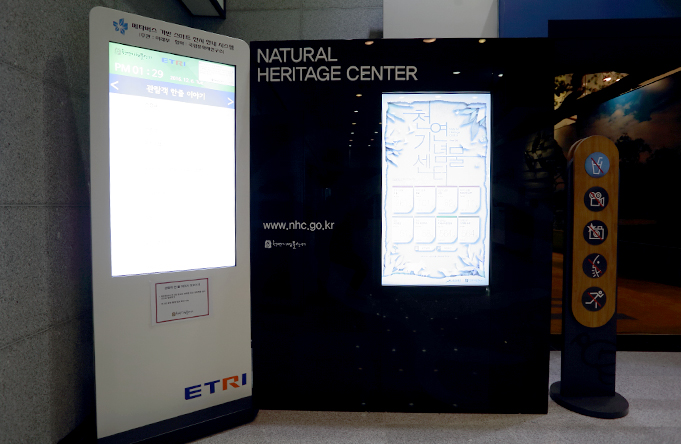
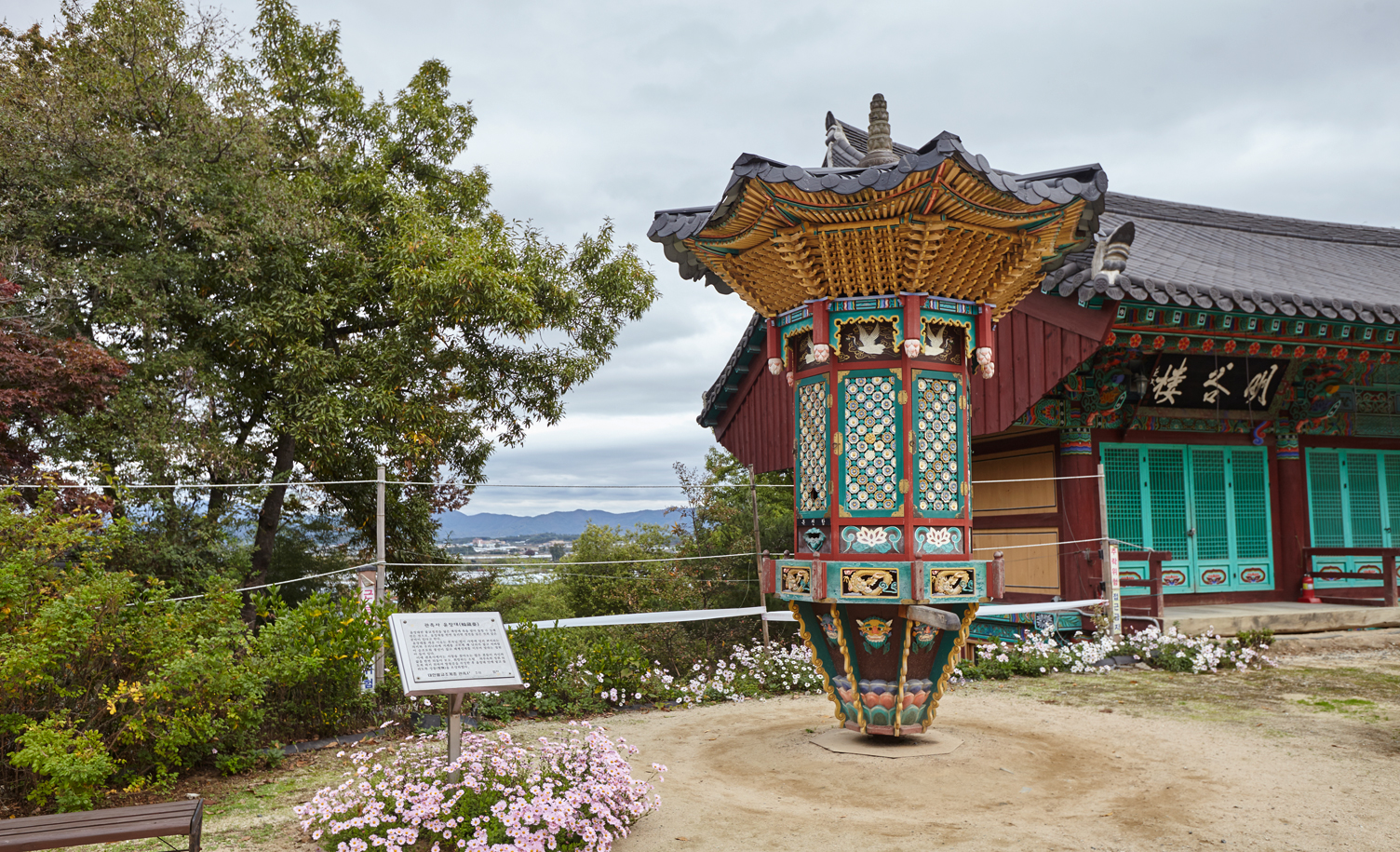
Walking into the exhibition space, everyone is welcomed by a magnificent pine tree. This old, giant tree was brought to the Center after it had withered away, but it still evokes the mystique of time-honored history. Take a look around the rare plants on display while listening to the birds’ chirping sound coming from the speakers. Visitors can appreciate the value of natural monuments by touching the actual fruits of bead trees and Gleditsia sinensis and by smelling the fragrant thyme.
Protect and Preserve the Natural Monuments
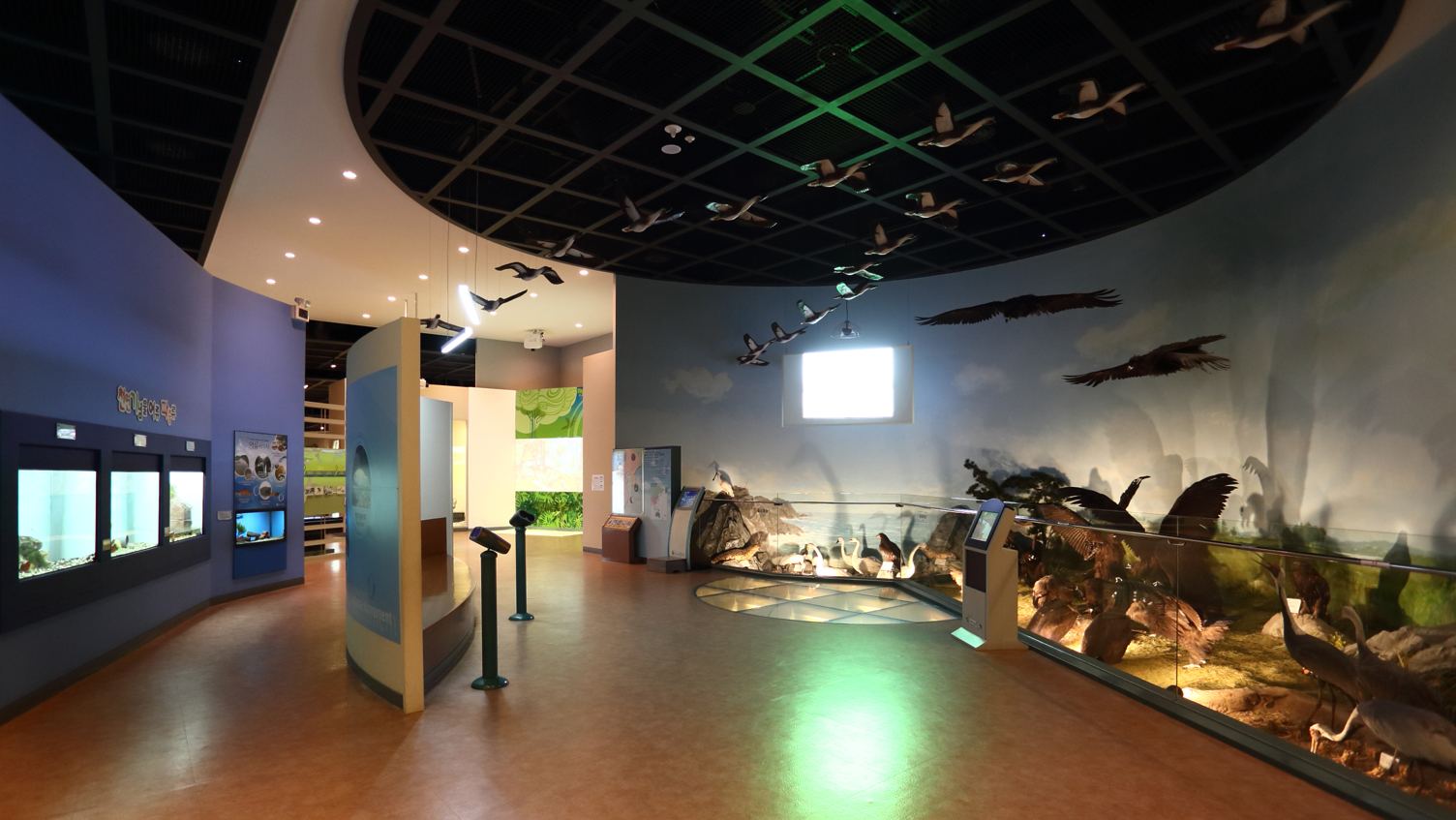
The exhibits include Jindo dogs and Sapsal dogs, the traditional species found in Korea; otters and goats;
and Asiatic black bears on the brink of extinction due to indiscriminate breeding to extract their gall bladders.
The largest portion of the animals designated as natural monuments is from avian species. Visitors can observe taxidermied species of swans that seasonally visit the Korean peninsula each year, as well as goshawks, eagles, and cranes and enjoy a realistic experience by selecting birds on the touch screen and listening to their chirping sound.
Although the most well-known type of natural monument is the fauna and flora, some geological features and minerals are also included in the list. The dinosaur eggs and minerals from billions of years ago demonstrate the long history of the Korean peninsula. In particular, this exhibition space allows visitors to have a hands-on audiovisual experience of various stories on dinosaurs through games.
Visitors can also learn about the names of diverse dinosaurs by travelling through the dinosaur kingdom on the screen with their own avatars they made at the entrance. Particularly popular among the visitors is the egg-moving game, which uses NFC technology to enable the users to move the eggs in their own smartphone screen. The transparent screen over the specimens of dinosaur egg fossils is used for playing games and quizzes related to dinosaurs.

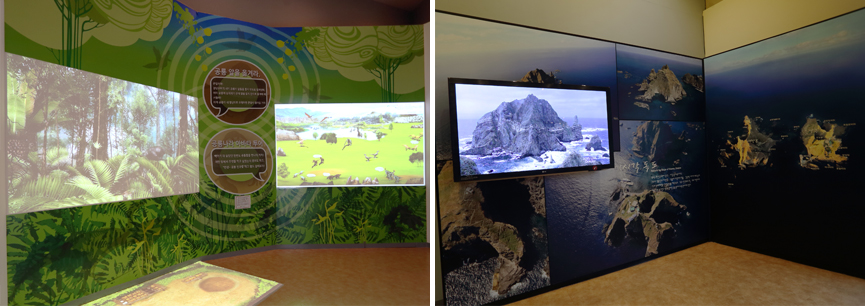
Korean ancestors often built pavilions to enjoy the landscape of low hills and crystal-clear streams all year round. They appreciated the arts in the outdoors in the seasons of blooming flowers and enjoyed reciting poems outside, even on snowy winter days. The places related to such traditional culture and arts and everything of cultural value are classified as “scenic spots.” The Center has a space dedicated to the stories about those scenic spots and natural reserves with a number of natural monuments to be protected. Also, children are invited to learn about the territorial history and the value and significance of Dokdo Island, which has become the subject of a territorial dispute with neighboring countries, and Jeju Island, which was recently designated as a World Natural Heritage site.
Encounter with 4,000-Year-Old Woolly Mammoth
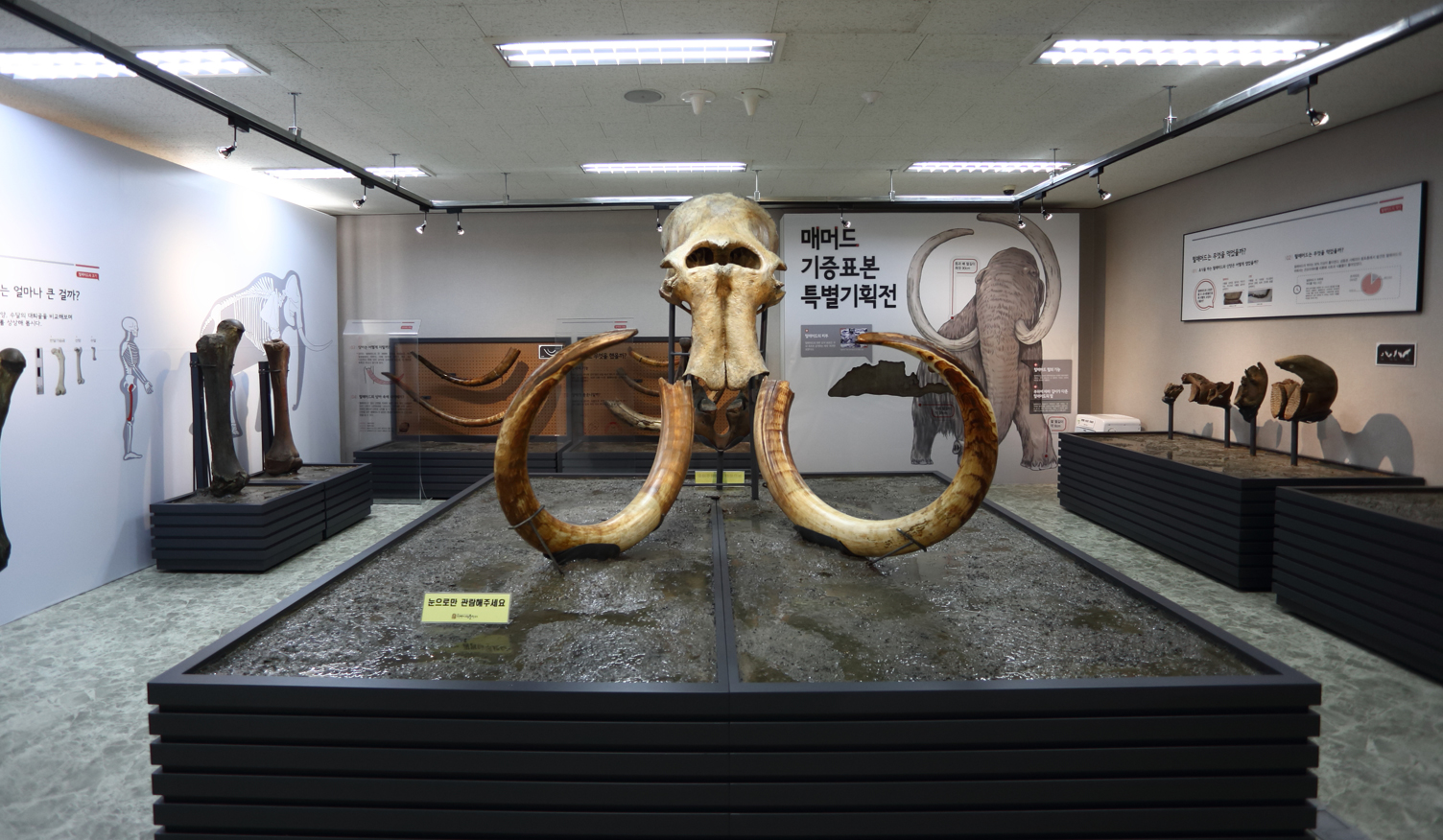
Mammoths frequently appear in movies set against the backdrop of primitive ages. The Natural Heritage Center exhibits this mysterious animal known to have coexisted with human beings until 4,000 years ago. The exhibits include the actual skin, skull, tooth, ivory, and thigh bone of a woolly mammoth.
The special display is highlighted by the large skull, which hints at the gigantic size of the woolly mammoth. The large holes in the skull are the slots for a long nose and large eyes, and visitors can have the interesting experience of imagining the mysterious appearance of a woolly mammoth strolling throughout Siberia. Also on display are the enormous ivory tusks, which were probably used by the woolly mammoth to remove snow and protect itself in fights against enemies.
The gigantic woolly mammoths disappeared from the surface of the earth for various reasons, including climate change, a large meteorite’s collision with the earth, and reckless hunting. Woolly mammoths were often killed by people, because they were an important source of food for prehistoric people and provided materials necessary for making arms and accessories.
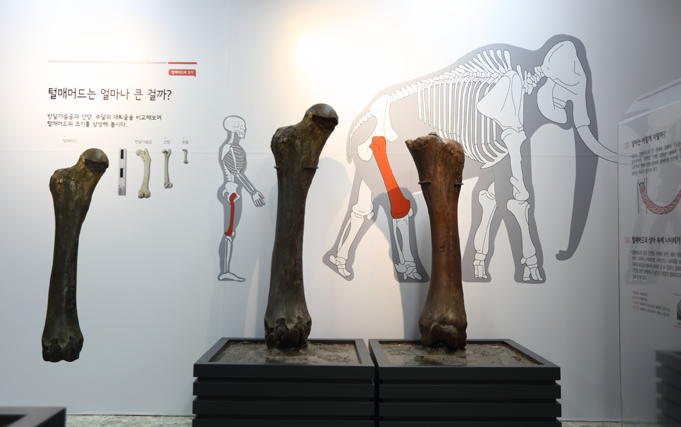

One might think that the scope of natural monuments is limited to the contemporary fauna and flora and specific regions.
However, they are not simply nature itself; some of them have lived for more than 1,000 years, and others contain the history and spirit of the Korean people.
Since old natural monuments also have important scholarly value, it is necessary to preserve them and recognize their significance.
The Natural Heritage Center provides a precious opportunity to learn about the natural monuments
and reconsider the value of natural heritage deserving devoted preservation.
